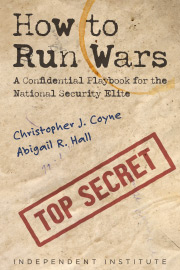In May 2015, in the wake of protests about police killings throughout the U.S., President Obama issued an executive order that restricted police departments’ access to certain surplus military gear, including armored vehicles, grenade launchers and combat weapons.
During his campaign Donald Trump said, “I will rescind” Obama’s executive order because Program 1033, the Department of Defense initiative that allows police to obtain such equipment at little to no cost, is “an excellent program that enhances community safety.”
While no one knows exactly what President Trump will do, the discussion over the weapons, equipment and tactics used by police departments brings to light an important, yet often ignored, trend: Police have come to look and act like soldiers.
Over the past 30 years police departments across the U.S. have acquired large quantities of military equipment. Moreover, police departments have begun to dress like the military, donning “battle dress uniforms” as opposed to traditional police uniforms. Police have also adopted questionable military tactics like no-knock raids.
While some argue that these changes are desirable, it’s important to understand the critical differences between the police and military. Blurring these differences leads to undesirable outcomes.
The Founding Fathers recognized that the police and military serve very different functions. Police are domestic peacekeepers. Their job is to uphold the law and protect the rights of citizens—both offenders and victims alike. They are to use violence only as a last resort.
The military, by contrast, is tasked with fighting enemies of the U.S. in foreign conflicts. They are trained to use violence to destroy their enemies and advance our interests.
Police militarization can be traced primarily to two policies: the war on drugs and the war on terror. Throughout the 1970s and beyond, concerns over a supposed “drug epidemic” prompted state and local law enforcement to become involved in federal drug policy. Police departments used this new mission to justify larger budgets and to obtain other resources, such as weapons and training.
In 1981 Congress passed the Military Cooperation with Law Enforcement Act, which allowed the DOD to offer equipment, intelligence and training to local law enforcement to combat illegal drugs.
Following 9/11 the militarization of domestic police accelerated once again as the federal government spent millions arming police forces to combat the supposed terror threat. Part of this acceleration included expansion of the 1033 Program. By 2010 nearly $212 million in military equipment had been transferred each year to local police. By 2013 the transfer had reached $450 million.
These two policies placed police on the front lines of never-ending wars in which U.S. citizens were possible enemies.
We can observe an unnerving trend in U.S. policing. When police begin to think and act like soldiers and treat citizens as enemies, we lose one of the critical checks and balances the founders so conscientiously put in place.
If President-elect Trump is serious about fixing the problems endemic to U.S. policing, he would do well to tighten the restrictions on what equipment may be transferred to police, not relax them.









